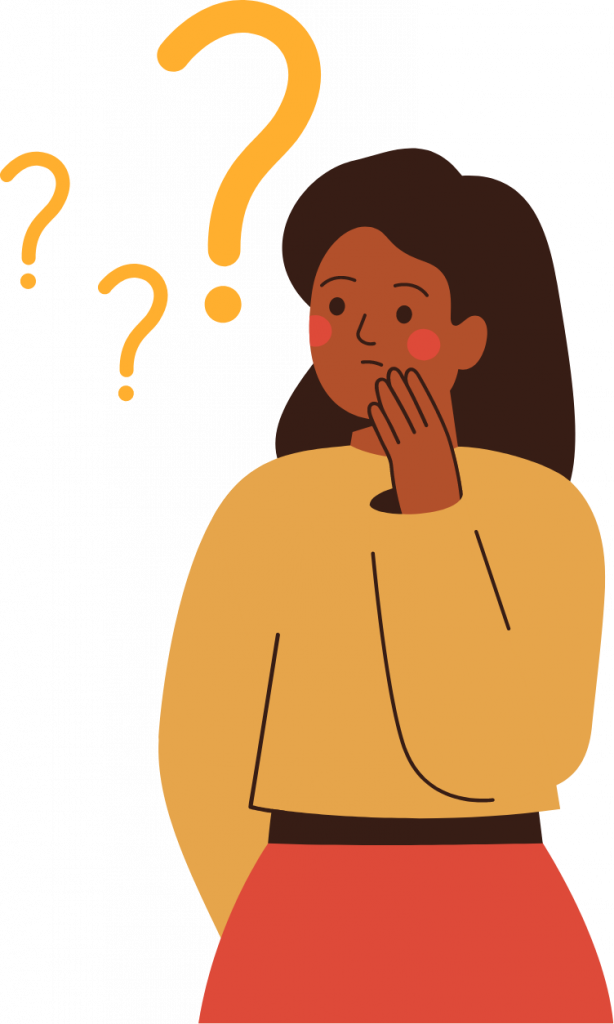

Healthy Relationships
Modeling Qualities of Healthy Relationships
Respect is to treat others the way you want to be treated, be considerate, honour someone’s feelings and opinions.
Kindness is treating others the way you want to be treated, the golden rule.
Trust is being honest, matching our words and feelings with our thoughts and actions.
Good Communication is clear, honest, and respectful of others’ feelings. The ability to work through disagreements/arguments and come to a calm understanding.
Independence is being able to do your own thing and have different groups of friends.
Fun is when you have fun together but not at the expense of others (not having fun by picking on other people).
Equality is when no one misuses their power or skills to hurt or control others.
Safety is feeling like your body and emotions are safe with/around this person.
Empathy is being able to see a person’s world with no judgement, understand their feelings and communicate your understanding.
Empathy Statements can help us consider other people’s experiences without judgement. This can help us understand what people may be feeling, and even why they are behaving in a particular way.
- Empathy Statement 1: I saw, and it made me feel… describe what happened and how you felt
- Empathy Statement 2: They may have felt… think about how the person felt when the situation was happening
- Empathy Statement 3: They may need… think about what this person might need immediately and, in the future, to prevent or stop the bullying from happening again
Respecting Personal Boundaries is listening to what someone says, respecting someone’s answer, and not pushing people to do or say things they are not comfortable with.
Understanding is using empathy and understanding other people’s emotions.
Promoting Healthy Relationships
Healthy relationships are not just with other people. They are also the ones we have with ourselves, too. Loving oneself can be challenging, but it is important to promote self-love to your child/youth.
If this is something you are struggling with, please talk to someone, like a counsellor, doctor, or elder. You deserve to be happy and love yourself, too! The wonderful thing about you loving yourself is it provides your child/youth with a model of what it looks like so they are more likely to adopt self-love too! If you have been struggling with loving yourself or having confidence, having confidence can feel self-centred, but having healthy self-esteem is not selfish. It is important!
What Is Self-Esteem and Why Is It Important?
Self-Esteem
is how someone thinks and feels about themselves. It can either be positive or negative.
Self-esteem influences overall happiness. If a person is not happy with themself, their happiness in other aspects of their life is impacted too. Having a positive view of self can help a person to try new things, connect with others, believe in themselves, and work hard to conquer challenging tasks.
Self-esteem might fluctuate here and there, but building an overall sense of self-love and acceptance is important to health and happiness.
Self-esteem is also influenced by body image and body image influences self-esteem.
Body Image is how a person views their body (in their mind and when they look in the mirror). How a person views their body can be impacted by self-esteem and cultural ideals of beauty.
Valuing Yourself to Have Boundaries
Boundaries are so important to wellness.
Boundaries are limits we set for ourselves in our relationships. Healthy boundaries allow us to say “No” to others and be ourselves. How can you teach your kids/youth about boundaries? There are a couple of things you can do to promote healthy boundaries.
- Model healthy boundaries. This will help your child/youth know what boundaries look like and that it is okay to have them. Boundaries can be challenging and if it is something you struggle with, seek help with a counsellor or other mental health professional.
- Talk about boundaries. Let children and youth know it is okay to say no to something which makes them uncomfortable.
- Look for resources. In your community, there may be resources to help develop boundaries.
- In Red Deer, the Central Alberta Sexual Assault Support Centre and The Outreach Centre have programs for youth with discuss boundaries
- Practice clear expectations within your classroom
Remember, it is okay to say no! Boundaries protect us. They protect our time, energy, possessions, and relationships (to self and others).
If someone does not respond well to you setting boundaries, that is to do with them not you. You are allowed to have boundaries. Do not allow others to sway your boundaries because they want something from you or do not like the limits you have set. A healthy relationship is one in which your boundaries are respected and valued. Unhealthy relationships do not.
Types of Boundaries
Boundaries are to help keep a person safe. They create clear expectations which help to create healthy relationships. Your boundaries are for you to decide. We do not decide other people’s boundaries. For example, you cannot decide with another person is comfortable with.
There are 7 types of boundaries.
boundaries that protect your feelings and thoughts. It is protecting your right to your feelings, not being ridiculed about your emotions, and not being responsible for other people’s emotions. Your feelings are your own. Emotional boundaries create a safe place to have your emotions. It is about knowing when to take time for yourself and what you are comfortable sharing.
boundaries that protect your thoughts and ideas. It is how you communicate and discuss things with others.
boundaries that protect your possessions and money. It is being paid by your job as agreed upon. Material boundaries also help you decide if you want to lend your things/money to someone or not.
boundaries that protect your body and space. You have a right not to be touched and to have privacy. It is also about valuing your body by eating well and resting. It is also the boundary around your body and how close you like people to you. This can change depending on who you are around.
boundaries which protect your right to consent and what kind of sexual activity you like/where/when/with whom. It is being able to express what you want.
boundaries that protect your right to believe in what you want and practice your spiritual/religious beliefs.
boundaries that protect how you spend your time. It is how you prioritize your time and know your time is worth something. Time boundaries allow you to say no to do things you do not want to do.
Building Relationships Through Communication
Communication allows us to share what we think, how we feel, what we want, and what we expect. It helps us to share our emotions, feelings, and thoughts. Good communication helps us build our relationships with family and friends.
- Verbal Communication is based on our words.
- Nonverbal Communication is communication based on our actions (eye contact, body posture, gestures, facial expressions, voice tone, and voice volume).
Types of Communication
Aggressive Communication is when a person is expressing their needs, thoughts, and feelings in a manner that attacks the position and dignity of the receiver.
Examples:
- Yelling angrily
- Confrontational body language
- Grabbing the other person
- Being rude
- Angrily swearing at the other person
It can cause the other person to feel uncomfortable, scared, and unable to speak up.
Passive Aggressive Communication is when a person is expressing their needs, thoughts, and feelings in an indirect manner. It is delivered in a way that allows the sender to maintain a façade of kindness even though their intentions are not kind.
Examples:
- Sarcasm
- Backhanded comments (“Oh, you look very nice… for you.”)
- Rolling eyes
- Their words do not match their tone
- Does not directly talk about the topic
- Blaming others (“Well, if someone hadn’t lost their keys, we would have been here on time.”)
It can cause the other person to feel confused and frustrated.
Passive Communication is when someone is unable or unwilling to express their needs, thoughts, and feelings. They go along with what others say and do not speak up for themselves.
Examples:
- Closed off body language- hunched over, head down, etc.
- Not confident
- Non-confrontational
It can cause the other person to feel confused, uncomfortable, and want to give in.
Assertive Communication is when a person is expressing needs, thoughts, and feelings in a direct manner that does not attack the receiver but rather upholds their dignity. It is the key to positive conflict resolution.
Examples:
- Confidently expressing needs
- Straightforward and non-threatening
- Open body language
- Looking in the eye
- Calm
- Clear tone of voice
The other person can feel heard, understood, and hopeful for a solution.
“I” Statement is a way of phrasing our communication where we use “I” sentences to state how we are feeling and how the behaviour/action that happened made us feel. We can use it to offer solutions for next time.
Three parts to “I” Statements:
- Focusing on how you feel
- Describing what happened (the action or behaviour)
- Offering a solution to the problem
For example, “I am feeling very frustrated. I do not like you wearing my clothes without asking. I know I usually let you wear my clothes, but I would appreciate it if you asked first.”
Consent
Consent is a voluntary agreement between people that they want to do something together. Make sure everyone says yes because they want to and not because they feel pressured to say yes.
Consent is:
- Active, not passive. Only YES means YES!
- Knowing and respecting a person’s own boundaries, as well as the boundaries of others
- Ongoing conversation, not a one-time deal.
Consent Laws in Canada
Legal age of consent to sexual activity with anyone older than you is 16 in Canada.
Under 12
Cannot consent to sexual activity.
Ages 12-13
The law allows for consent to sexual activity with someone less than 2 years older than them.
Ages 14-15
The law allows for consent to sexual activity with someone less than 5 years older unless the person is in a position of power, authority, or influence over the other (then they cannot give consent).
Ages 16+
The law allows for consent to sexual activity with an adult regardless of age, unless the adult is in a position of power, authority, or influence over the youth (then consent cannot be given).
- On someone’s behalf (given by someone else)
- If the other person is in a position of power, trust, or authority (coach, teacher, counsellor, boss, family member)
- If someone is threatened, manipulated or forced
- If someone expresses in words or actions NO (a lack of agreement)
- Actions can include turning away, putting hands/arms up to block the person, stepping back, shaking head no, etc.
- If someone is incapable of giving consent (unconscious, sleeping, under the influence of drugs or alcohol)
- If a person is unconscious, asleep, drunk, high or otherwise intoxicated, they cannot give consent. The person must be alert, of stable mind, conscious, and sober to give consent to sexual activity.

Dealing With Conflict
Conflict is a disagreement (difference of opinion) between people or groups. It can be big or small, and the outcome depends on how we respond, manage our emotions, and choose to resolve the conflict.
Conflict Resolution is how to respond to a conflict, instead of reacting to the conflict.
Four steps to responding to conflict:
- STOP- take a few breaths. Remove yourself from the situation. Pause before hitting send or replying to messages.
- THINK- think about what you want and what the other person wants. Use empathy to try and understand the other person’s point of view.
- FEEL- recognize your feelings. Are you mad, angry, or sad? Make sure you are in control of your feelings and emotions. If you don’t feel in control, go back to Step One and take some time to step away from the conflict and come back later.
- ACT- work to resolve the conflict. When we see conflict as a natural and normal part of our interactions with others, we can focus on finding a solution, rather than deciding who is right or wrong.
Unhealthy Relationships
Qualities of Unhealthy Relationships
Control is when someone makes all the decisions, tells others what to do, and does not let others do what they want. A controlling person might try to isolate a person from family and friends or become jealous. (This is not the same as parents, caregivers, teachers, and coaches having rules and guidelines in your life. The guidelines, rules, and responsibilities are to help you, even if sometimes it does not feel like it!).
Hostility is when one person tries to pick fights with the other person.
Dishonesty is when one person is lying or keeping information from another person. It could also be the person stealing from the other person. This does not include keeping information like a surprise party or a present from the other person.
Disrespect is when the person makes fun of the other person and their opinions or interests. It could also be destroying something which belongs to the other person.
Dependence is when two people feel as though they cannot live without one another, or when one person feels they cannot live without someone else. If the relationship ends or threatens to end, one person may threaten or do something drastic or unhealthy.
Intimidation is when one person tries to control another through fear (like threats of violence, insults, or isolation).
Violence can be physical, emotional, or sexual. Violence might be used to maintain control over the other person.
If you notice any of these traits within a relationship you are part of or your child/youth is a part of, seek help (talk to a counsellor or appropriate authorities).
Self
Sometimes, people can struggle with self-esteem. This happens from time to time. If it is a recurring issue or if you or your child/youth are consistently struggling with self-esteem, it is important to connect them with help. Low self-esteem can lead to unhealthy consequences.
If someone has negative self-esteem, you might notice:
- Negative self-talk (they talk poorly about themselves)
- Poor boundaries
- Giving up on themself
- Risky behaviour
- Not standing up for themself
- Self-sabotage
- Being constantly busy with work, activities, school, or others (this could be because they do not want to spend time with themselves)
- And more
It can show up as something different for everyone.
If someone has low self-esteem, it can lead to:
- Increased anxiety, stress, loneliness, and depression
- Problems with relationships
- More difficulty concentrating in schools
- Increased risk of using drugs or alcohol
If your child/you are struggling with treating themself with respect, love, and compassion, talk to someone about it, like a counsellor, loved one, or mental health professional.
For every one negative thing a person tells themself (or someone else), they need ten positive ones to counteract it.
Others
Unhealthy relationships can occur with a variety of people, from friends to coaches to family members.
What signs might you notice if a child/youth you work with is in an unhealthy relationship?
This can be challenging. This is not a matter of one-size-fits-all. As you know, relationships are complicated. Some of the following can be signs if your child/youth is in an unhealthy relationship.
- After they hang out with their friend, your child/youth might seem down, uncomfortable, or off
- You see your youth/child putting in all the effort
- Your child/youth is being used by their friend
- The person is much older than your child/youth. The person might message them a lot.
- Your child/youth might start to isolate themselves or stop talking about their relationship
- They might start acting differently
- Their sense of style changes drastically and quickly
- They start lying to you
- Your child/youth tells you when they do well, their friend is upset or unhappy for them
- There is a lot of jealousy
- The person makes fun of your child/youth for things they like (not just harmless teasing)
- Your child/youth starts ignoring other friends, relationships, or responsibilities
- They stop taking care of themselves
- The person threatens your child/youth
- “I won’t be your friend anymore if…”
- “If you break up with me, I will kill myself.”
- This one is tricky because the threat might be to keep quiet so your child might not tell you what is going on.
These are just some of the signs you might notice if your child/youth is in an unhealthy relationship.
Abuse
For the signs and what to do if a child/youth discloses abuse to you, click here for the Central Alberta Child Advocacy Centre website.
Intimate Relationships
As a youth/teen in your life starts dating, you might notice some signs if it is not a healthy fit. (If you notice any of these traits in your own relationships, remember… you deserve to be happy. Seek help if you need it).
Violence
Any type of violence is not okay in a relationship. The person being harmed does not, nor ever, deserved it. This is unhealthy behaviour. Violence is not limited to being physically harmed.
Violence includes:
the use of words or actions to control, dominate, intimidate, degrade, or intentionally harm another person psychologically. Emotional violence is a “red flag” warning sign of violence. It typically happens before physical violence. It is the most common form of violence.
Examples of emotional violence: Making fun/overly criticizing, threats of violence or property destruction, spying, controlling what a person does or who they spend time together with, spreading rumours/telling secrets, etc.
the use of intentional force on another person to control their behaviour, intimidate, or punish.
Examples include: scratching, biting, pushing/shoving, grabbing the person’s clothes, preventing the person from leaving a place, strangulation, or using a weapon.
It can be one incident. It may also involve multiple, repeated, and potentially escalating incidents.
forcing any form of sexual activity on someone without their consent.
any situation where one person uses verbal or physical means to obtain sexual activity without consent. This includes pressuring someone into saying yes. This is sexual assault.
any unwelcome sexual advance, request for sexual favours, or other forms of verbal, written, or physical conduct of a sexual nature, like making sexual jokes which make people feel uncomfortable, posting offensive online pictures, name-calling based on someone’s gender or sexual orientation, or unwanted touching.
sending sexually explicit images or messages from one person to another using technology.
The law states that sexting between or regarding anyone under 18 is considered possessing and distributing child pornography. Anyone owning a device or accessing these images can be charged.
The law is concerned with the distribution of images and videos and whether one person in the relationship shares those images with other people or the images are leaked.
Any type of violence in a relationship is not okay regardless of whether it happens once or more than once. Tell someone and seek help. Both parties involved need help either developing the skills for healthy relationships or coping with the impact of the violence.
If someone is using/has used violence against you, remember it is not your fault. It does not reflect your worth.
*7 Types of Emotional Violence:
- Degrading: a person receives messages that they are not good enough. They are insulted, humiliated and made fun of. They may come to feel worthless.
- Isolating: a person is kept from their regular social interactions, and/or their family and friends. They are cut off from their support networks.
- Ignoring: a person is given mixed messages – welcomed in some situations and ignored in others.
- Terrorizing: fear is created using insults and be verbal or non-verbal threats, which intimidate a person.
- Corrupting: a person is encouraged to participate in unwanted, harmful, and perhaps even illegal behaviour.
- Exploiting: one person uses another to obtain something they want or need – whether emotionally, physically, financially, or sexually.
- Controlling: one person tries to dominate and control another person’s behaviour. This is often motivated by jealousy.
Trauma Bonding
A type of unhealthy relationship you might notice is a trauma bond. This is a type of relationship which develops between a person being abused and the person abusing them.
What Is It?
Trauma bonding is when a person is being abused and they form a connection with the person who is abusing them. The person being abused may have feelings of fondness or sympathy for the person abusing them.
You might have heard of Stockholm syndrome. This is a type of trauma bond.
Not everyone who is abused will develop a trauma bond with their abuser.
Why Does This Happen?
There are a couple of reasons why trauma bonds form.
- Attachment. We form attachments for survival. Trauma bonds are unhealthy attachments. When our safety is threatened, we look for comfort and turn to others. As a child, we often turn to parents and as we get older, we turn to significant others. A person being abused might turn to the person abusing them. For example, if a child/youth is being abused by a parent, they might turn to them for comfort. This can create a trauma bond.
- Dependence. In an abusive relationship, the abused person might rely on the person abusing them to fulfill their needs. In an abusive child/parent relationship, the child relies on their parent. They may begin to associate love and abuse. This can make it hard for the child to see their parent as abusive or bad, so the child might blame themselves for what is happening.
- Cycle of Abuse. The cycle of abuse can reinforce a trauma bond. As part of the cycle, the abusive person will often be really kind or caring after they are abusive.
- Biology. Trauma bonds are reinforced by biology. When we connect with others, our brain releases a chemical called oxytocin which makes us feel warm and loving. This increases the bond.

When Can Trauma Bonds Happen?
Trauma bonds can happen in any type of situation where there is abuse or exploitation.
This could include:
- Abusive relationships
- Human/sex trafficking
- Kidnapping
- Religious extremism or cults
Not everyone in these situations will develop a trauma bond. In order for a trauma bond to occur, there must be a perceived or real threat of danger, abusive or harsh behaviour with kindness, isolation from others, and feeling helpless or lack of escape.
What Does It Look Like?
Trauma bonds can be tricky. It might seem obvious that abuse is taking place, but it can feel complicated and confusing for the person suffering the abuse.
You might notice the person’s relationship is cyclical. It could switch from abuse/toxic behaviour to kindness or affection.
There might also be a power imbalance in the relationship, like a parent/child relationship or romantic relationship with the person feeling powerless or lost without the abuser.
The person being abused:
- Could defend/make excuses for the person’s mistreatment or abuse
- Could lie to hide the abuse
- Could push other people away
- Could become angry when approached about the relationship
- Could feel stuck
- Might say other people do not understand
- Could feel hopeless or helpless
- Could have poor boundaries
- Might stay in unhealthy relationships
- Could try hard to get people to like them or seek approval
- Be really kind to people who have hurt them
- Might continually think about people who have hurt them, even if the person is gone
- Could be really unhappy or distressed (emotionally or physically)
What To Do?
If you think a child in your life is being abused, please click here to visit the CACAC website
When dealing with a trauma bond:
- Be supportive and understanding
- Encourage positive connections/self-talk
- Encourage self-care
- Encourage the person to talk to someone about the unhealthy relationship (counsellor, spiritual leader, elder, etc.)
- Help the person live in the moment by bringing their attention to the task at hand
- Ask questions about the present moment

Further Resources
If you would like to speak to someone about mental health issues, the Alberta Health Services Mental Health Help Line is available 24/7, offering information and referrals on any aspect of mental health.
Call toll-free: 1-877-303-2642
Trending Topics
Depression
Depression What Is It? Depression is a mood disorder which means it impacts how a person is feeling. It can cause a person to feel
Accidental Overdose
Accidental Overdose What Is it? An overdose is what happens to someone’s body when they take too much of a substance or too many substances.
Online Relationships
Online Relationships Online can be fun! There are games, music, and videos. We can talk to friends and family online. Tips for Being Safe Online:
Online Relationships
Online Relationships Online can be fun! There are games, music, and videos. We can talk to friends and family online. Tips for Being Safe Online:

